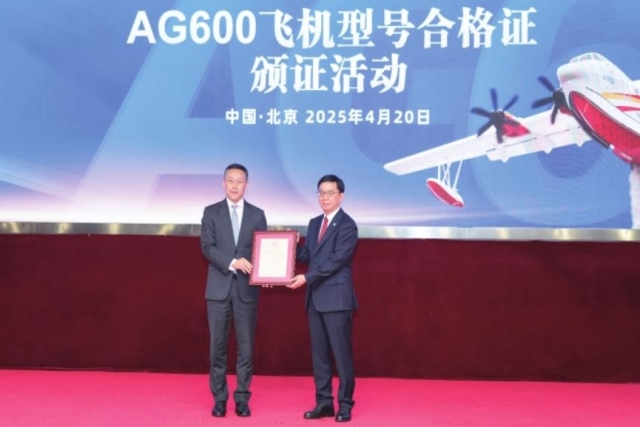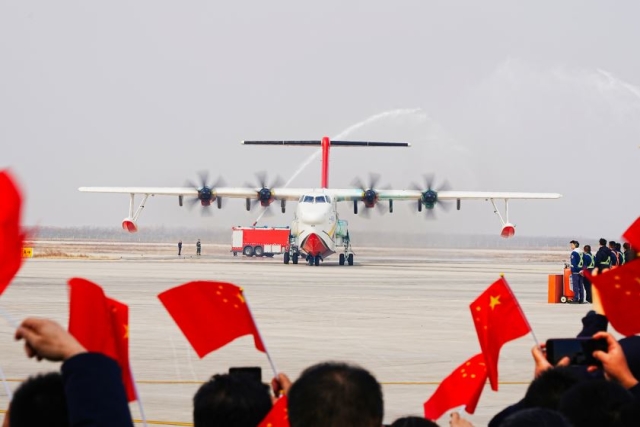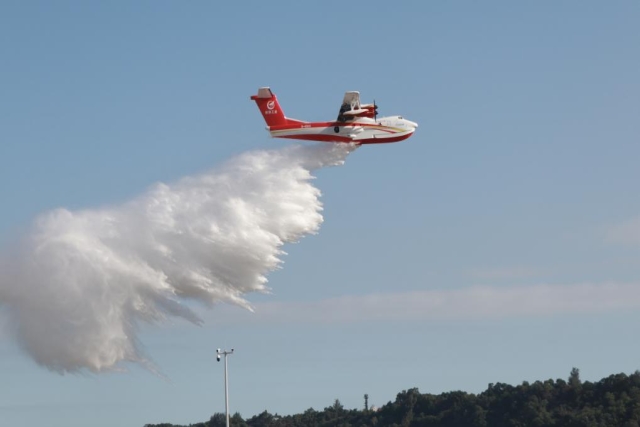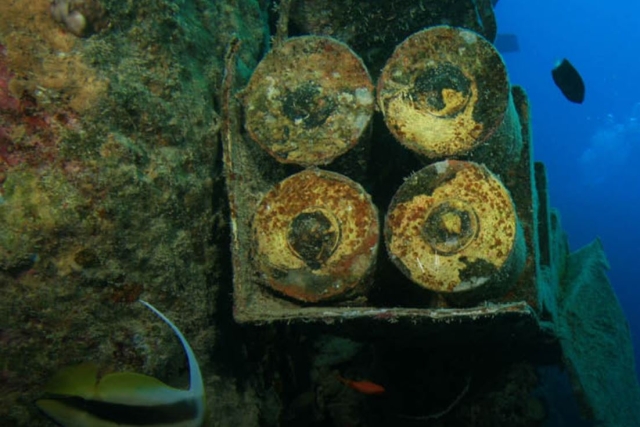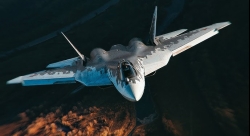China Begins Mass Production of AG600 Amphibious Aircraft
World’s largest amphibious civilian aircraft to boost firefighting, rescue, and maritime operations

China's domestically developed AG600 "Kunlong" amphibious aircraft has officially entered mass production after receiving its production certificate from the Civil Aviation Administration of China (CAAC) on Wednesday, according to the Aviation Industry Corporation of China (AVIC).
The certificate confirms that the AG600’s manufacturing process meets airworthiness regulations and adheres to design specifications, allowing AVIC to begin standardized production.
Slightly larger than most single-aisle airliners, the AG600 measures 38.9 meters in length, 11.7 meters in height, and has a wingspan of 38.8 meters—comparable to a Boeing 737. With a maximum takeoff weight of 60 tonnes, it holds the title of the world’s largest amphibious civilian aircraft by takeoff weight.
Described by its chief designer Huang Lingcai as “a plane that can swim and a ship that can fly,” the AG600 features an aircraft-shaped upper body and a ship-bottom-shaped hull. The design incorporates two 4-meter-long floats to stabilize the aircraft on water, as well as a fuselage that narrows at both ends and widens in the middle, resembling a dragon boat. This configuration reduces air resistance and improves stability during both flight and water operations.
The AG600 has a range of 4,500 kilometers and a low-altitude cruising speed of 480 km/h, enabling it to quickly respond to emergencies over long distances.
One of the AG600's key missions is forest firefighting. It is equipped with a belly-mounted scooping system that allows it to collect 12 tonnes of water in just 20 seconds while skimming over a lake or reservoir. This water can then be dropped over a fire site within four seconds, covering 3,000 to 4,000 square meters—roughly the size of 10 basketball courts.
“Such a localized downpour can match the effect of 300 firefighters working with hoses for two hours,” said an AVIC representative.
In rescue missions, the aircraft can operate within a 1,500-kilometer radius and carry up to 50 people, offering rapid response capabilities unmatched by traditional vessels.
The AG600 program, launched in 2009, has gone through several key milestones, including its first flight in 2017, water takeoff in 2018, and sea flight in 2020. In 2023, it demonstrated firefighting capabilities.
Looking ahead, AVIC plans to develop modular versions of the AG600 for missions such as maritime surveillance, natural resource exploration, and transport to islands and reefs.


